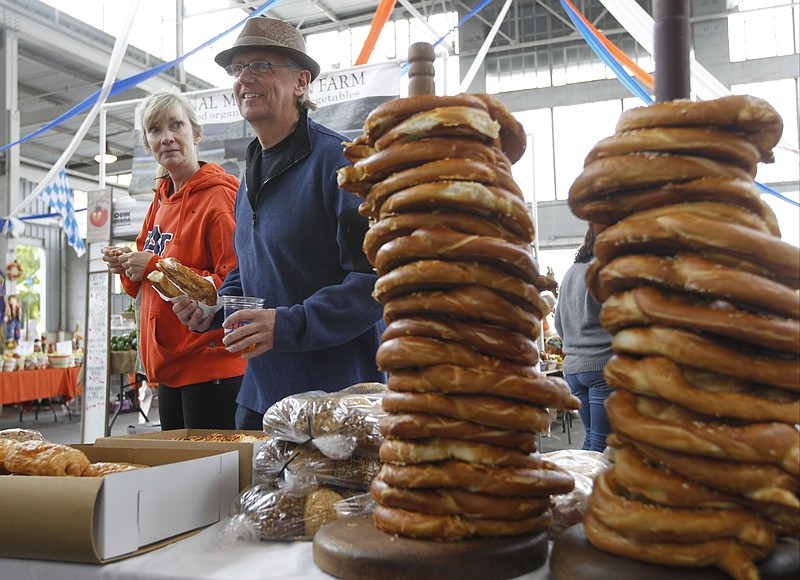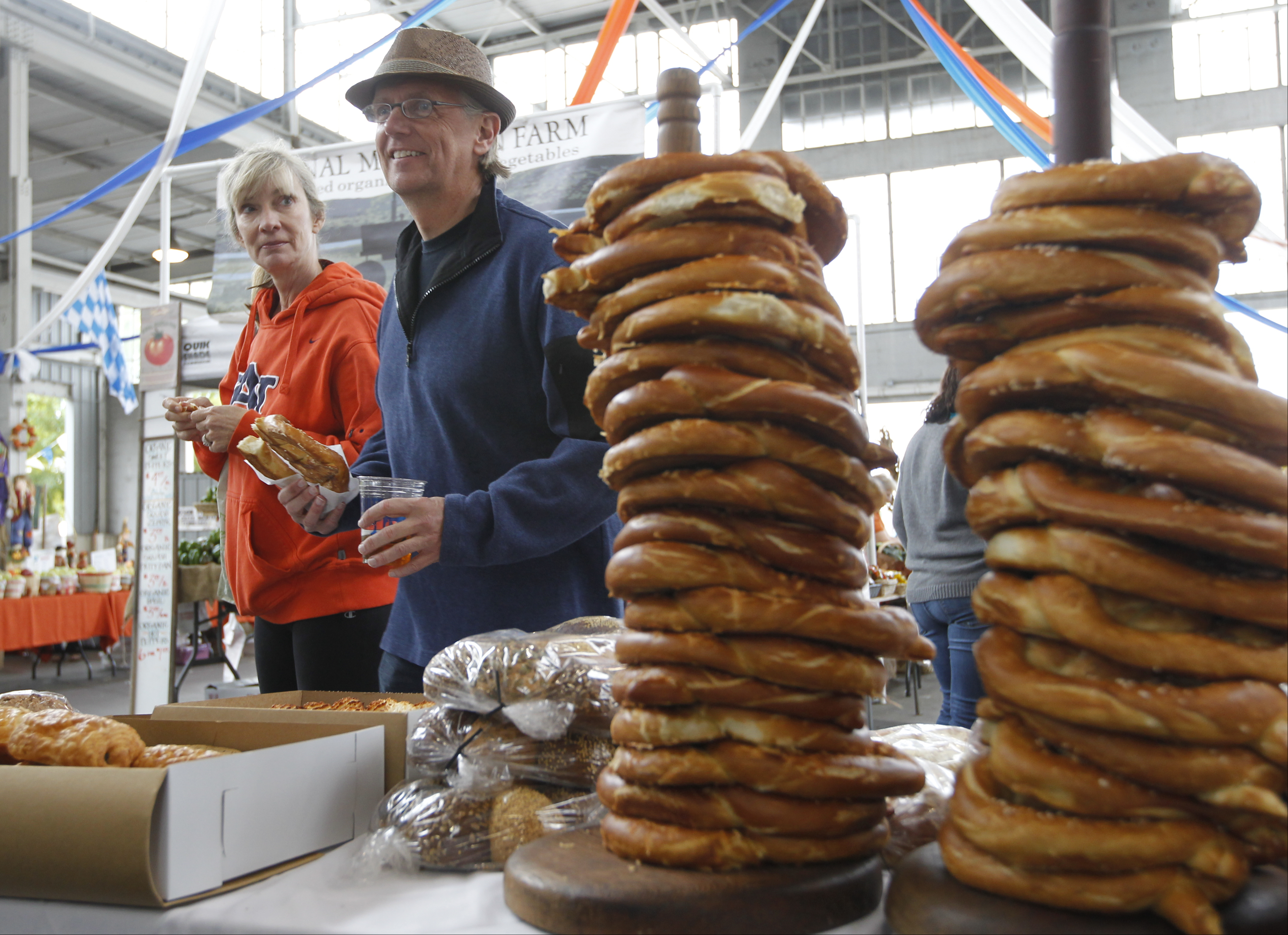Farmer's markets have blossomed around Chattanooga in recent years. In addition to the Chattanooga Market, there's the Main Street Market, the Brainerd Farmer's Market at Grace Episcopal Church and the Hixson Farmer's Market at St. Albans Episcopal, not to mention others in Cleveland, Tenn., Dalton, Ga., and other surrounding cities.
So, it's with this growing popularity of markets that the UT Center for Profitable Agriculture, in conjunction with the UT Extension and Tennessee Department of Agriculture, will present a Farmer's Market Boot Camp for area market vendors, set for March 5 at the Ag Center on Bonny Oaks Drive.
The daylong "camp" will feature a number of workshops intended to improve your selling skills and increase your profits. Here's a sample of the topics to be covered:
• Increase sales with electronic payments and SNAP (taking credit/debit cards with a smartphone or tablet).
• Food manufacturing with a Domestic Kitchen permit, cottage-food regulations and proper food labeling.
• Be informed about liability risk insurance applications and limitations related to liability risk from food-borne illness.
• Regulations regarding food manufacturing in a commercial kitchen and making acidified and formulated acid foods.
• Learn techniques for eye-catching booth displays and signage.
• Keep the wolves at bay by learning the rules about business taxes and getting a business license.
• Learn what customers are looking for at farmer's markets and tips for connecting with customers.
• Learn about food safety when offering product samples.
There is no charge for the workshop, but reservations must be made at least five days prior to the event. The boot camp is limited to 40 participants. You can preregister by contacting Nancy Austin in the UT Department of Food Science and Technology at naustin@utk.edu or by calling 865-974-7717 and provide your name, phone number and email address.
On my way home from a trip to Caribbean a few months ago, I had a lengthy layover in Aruba, so there was plenty of time to browse the duty-free shops in the airport. I spent most of my time in the cheese shop. Anyone who has been to Aruba knows the quality of cheeses found on the island. No surprise, since Aruba is a Dutch protectorate and, as cheese lovers know, some of the best cheeses in the world come from Holland. So I ended bringing home one big chunk of "old" - that's their term for "aged" - Gouda. It was also the most expensive I've ever purchased - $40 for a one-pound block. But a little sign perched next to the cheese display testified that this cheese had won national awards, and that was all it took to convince me to loosen my purse strings.
Old Gouda was not the only cheese that came home with me. The blue cheese went quickly, as did Swiss. But I couldn't bring myself to eat the $40 chunk of cheese. I don't know what I was waiting for. Maybe the king of Holland to grace my doorstep?
But I didn't want to waste it on myself. So it occurred to me that, if there were any way to save it for a few months, I could wait for an event when my family would all be together and that would be the best time to serve it. I'd opened it already, wanting to have a taste, so not being able to put it back in its original wrapping, I followed some suggestions from Nora Singley, former director of education for Murray's Cheese Shop in New York.
Freezing cheese is out of the question, I knew. Ice crystals form and destroy the cheese's texture. It may be OK for cooking, but not for enjoying sliced with fruit and a glass of wine. Singley notes that aged cheeses keep well for quite some time if stored properly, so here's how she suggests doing it:
• Never, ever store your cheese in plastic wrap. It suffocates the flavor, and it may end up tasting more like plastic that cheese.
• The best way to store cheese is in cheese paper, but most of us don't keep cheese paper in our pantry. Parchment paper or waxed paper works just as well. I used parchment and wrapped the cheese, taping the paper just as you would a present. Then I wrapped it loosely in aluminum foil.
• Cheeses should be stored in the warmest part of your refrigerator, preferably in the vegetable drawer or in a covered plastic Tupperware-style container.
Singley advises to never bring home more cheese than you can consume in two sittings. I brought enough home for 10. But I was happy that I followed Singley's advice. My cheese stayed in excellent condition for two months and might have stayed good a while longer. But once my family was gathered, it was gone in no time.
You don't need to go to Aruba to bring home aged Gouda. You'll find it locally at such stores as Fresh Market and Whole Foods, along with plenty of other excellent cheeses. Here's a tasty way to serve it, a recipe I found and used from dutchfood.about.com. They're good on their own, but try serving them with apple slices or grapes and a hearty glass of red wine.
Gouda Cookies
1 2/3 cups aged Gouda cheese, grated
1 cup flour
3 1/2 tablespoons butter, softened
1/2 teaspoon baking powder
Pinch of black pepper
Pinch of nutmeg
Heat oven to 400 degrees. Place all ingredients in a food processor and blitz until the dough forms a crumbly, doughy texture. Shape into a flat disc, wrap in plastic wrap and rest in the refrigerator for 20 minutes.
Sprinkle work surface with flour and roll the dough out thinly to about 1/8-inch thick. Cut out shapes using a cookie cutter and keep rolling out the dough as required, until you have used it all up. Line a cookie sheet with nonstick parchment paper and bake cookies for 10 minutes, or until slightly golden. Remove from the oven and allow to cool on a wire rack. Makes about 30 cookies, depending on the size of your cookie cutter.
Contact Anne Braly at abraly@timesfreepress.com.

